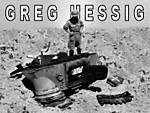The painting of the framework.
At first the framework was disassembled.
Then it was painted in redbrown. After this the framework was painted black.
During the drying phase, I adapted the ground to the right chain of T34.

The adjust of the track was made with a piece of rigid foam plate, then the fine work with modelling clay.

After drying I painted the framework in gun grey (Revell aquacolor).
I placed it to dry again on the diorama.



Now I have glued the pipeline and made some paint repairs, I had not seen at lamplight and the wooden planks of the walkway received a first painting.
This was made with diluted umbra burned oil paint.
I painted always 10 wooden planks and swabbed them with a soft cloth gently.




The pipeline was protected against rolling away with wooden wedges.
I do not know whether this is absolutely correct, but it looks plausible in my opinion.

The painting of framework was dried ... now the washing had to produce.
First english red oil paint were applied in little spots with a toothpick.
Then this was blurred with a large, soft brush .
Now a color broth was produced with diluted oil paint umbra burned and the the framework was washed with the same brush.
The top of the pipeline was treated. Spots of english red oil paints were applied with a toothpick.
Blure the spots without any pressure....so to avoid strip!
Since framework is aged within just a few minutes to at least 30 years
The images (the oil paint was slightly wet still)









Now, the "marriage" between wall and framework took place at last.
The framework was fixed with glue on the wooden beam and pressed on.















































































 .
.















































































































































































